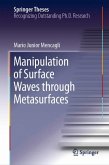The work described here investigates the advantages and limitations of using laser light for the deep in-vivo illumination and micromanipulation of the neuronal system in zebrafish. To do so, it combines and develops novel optical methods such as optogenetics, light sheet microscopy and optical micromanipulation. It also demonstrates, for the first time, that directional and focused laser beams can successfully be used to target large objects at considerable depth in a living organism to exert purely optical force - in this case on otoliths (ear stones) - and create fictive vestibular stimuli in a stationary animal. The behavioural study and simultaneous imaging of the whole brain reveal the location of the brain cells specific to each ear stone. Elucidating these fundamental neural processes holds substantial value for basic neuroscience researchers, who still have only a vague grasp of how brain circuits mediate perception. As such, it represents highly innovative research thathas already led to high-impact publications and is now being intensively pursued.








